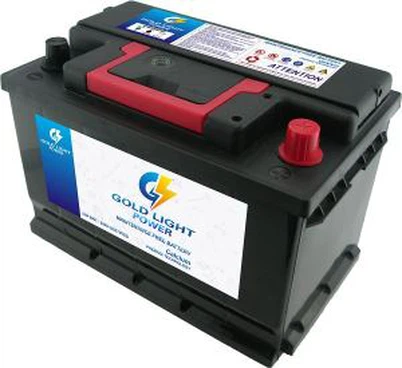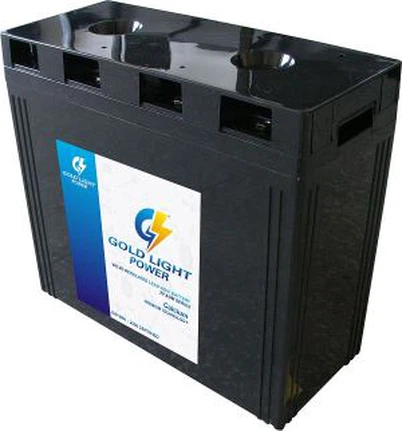How does the storage time affect a 2 volt battery?
Leave a message
As a seasoned 2-volt battery supplier, I've witnessed firsthand the profound impact that storage time can have on these essential power sources. In this blog post, I'll delve into the science behind how storage duration affects 2-volt batteries, drawing on my years of industry experience and the latest research.
The Basics of 2-Volt Batteries
Before we explore the effects of storage time, let's briefly review the fundamentals of 2-volt batteries. These batteries are commonly used in a variety of applications, including backup power systems, renewable energy storage, and telecommunications. They are known for their high energy density, long service life, and reliable performance.
2-volt batteries typically consist of multiple cells connected in series to achieve the desired voltage. Each cell contains a positive electrode (cathode), a negative electrode (anode), and an electrolyte solution that allows for the flow of ions between the electrodes. During charging, electrical energy is converted into chemical energy and stored in the battery. When the battery is discharged, the chemical energy is converted back into electrical energy to power the connected device.
The Impact of Storage Time on Battery Performance
Storage time can have a significant impact on the performance and lifespan of 2-volt batteries. Over time, several factors come into play that can degrade the battery's capacity, voltage, and overall efficiency. Let's take a closer look at some of the key effects of storage time on battery performance:
Self-Discharge
One of the primary effects of storage time is self-discharge. Even when a battery is not in use, it will gradually lose its charge over time due to internal chemical reactions. The rate of self-discharge depends on several factors, including the battery chemistry, temperature, and state of charge at the time of storage.
In general, lead-acid batteries, such as the 2-volt batteries commonly used in backup power systems, have a relatively high self-discharge rate. This means that they can lose a significant amount of charge during long periods of storage. For example, a fully charged lead-acid battery may lose up to 5% of its charge per month at room temperature.
Self-discharge can have several negative consequences for battery performance. First, it can reduce the battery's available capacity, which means that it will be able to provide less power when needed. Second, it can lead to sulfation, a process in which lead sulfate crystals form on the battery's electrodes. Sulfation can reduce the battery's efficiency and lifespan, and in severe cases, it can render the battery unusable.
Chemical Degradation
In addition to self-discharge, storage time can also cause chemical degradation of the battery's components. Over time, the electrolyte solution in the battery can break down, leading to a decrease in its conductivity and an increase in its internal resistance. This can reduce the battery's ability to deliver power efficiently and can also cause it to heat up during charging and discharging.
The electrodes in the battery can also degrade over time due to oxidation and corrosion. This can lead to a decrease in the battery's capacity and an increase in its internal resistance. In some cases, the electrodes may become so damaged that they can no longer function properly, which can render the battery unusable.
Temperature Effects
Temperature is another important factor that can affect the performance and lifespan of 2-volt batteries during storage. High temperatures can accelerate the rate of self-discharge and chemical degradation, while low temperatures can reduce the battery's capacity and increase its internal resistance.
Ideally, 2-volt batteries should be stored in a cool, dry place at a temperature between 20°C and 25°C (68°F and 77°F). If the batteries are stored at higher temperatures, they should be checked regularly and recharged as needed to prevent excessive self-discharge and chemical degradation.
Mitigating the Effects of Storage Time
While storage time can have a significant impact on the performance and lifespan of 2-volt batteries, there are several steps that can be taken to mitigate these effects. Here are some tips for storing 2-volt batteries to ensure their long-term performance:
Charge the Batteries Fully
Before storing 2-volt batteries, it's important to charge them fully to their recommended voltage. This will help to prevent self-discharge and sulfation during storage. It's also a good idea to check the battery's state of charge periodically during storage and recharge it as needed to maintain a full charge.
Store the Batteries in a Cool, Dry Place
As mentioned earlier, temperature and humidity can have a significant impact on the performance and lifespan of 2-volt batteries during storage. To minimize these effects, it's important to store the batteries in a cool, dry place at a temperature between 20°C and 25°C (68°F and 77°F). Avoid storing the batteries in direct sunlight or in areas with high humidity, as this can accelerate the rate of self-discharge and chemical degradation.
Use a Battery Maintainer
A battery maintainer, also known as a trickle charger, can be a useful tool for storing 2-volt batteries. A battery maintainer is designed to provide a small, continuous charge to the battery to prevent self-discharge and sulfation. This can help to extend the battery's lifespan and ensure its long-term performance.
Check the Batteries Regularly
Even when 2-volt batteries are stored properly, it's important to check them regularly to ensure that they are in good condition. This includes checking the battery's voltage, state of charge, and overall appearance. If any signs of damage or degradation are detected, the battery should be replaced immediately.


Our 2-Volt Battery Products
At our company, we offer a wide range of high-quality 2-volt batteries for various applications. Our batteries are designed to provide reliable performance and long service life, even under challenging conditions. Here are some of our popular 2-volt battery products:
- 2V300AH OPzV Battery Deep Cycle Solar Power Battery Valve Regulated Lead Aicd Battery 20 Years Life: This deep cycle solar power battery is designed for use in renewable energy systems. It features a valve-regulated lead-acid (VRLA) design, which means that it is maintenance-free and can be installed in any position. The battery has a long service life of up to 20 years and is capable of providing reliable power for solar power systems.
- 2V200AH OPzV Battery, GEL Tubular Plate Battery UPS EPS 5years Warranty: This GEL tubular plate battery is designed for use in uninterruptible power supply (UPS) and emergency power supply (EPS) systems. It features a gel electrolyte, which provides superior performance and reliability compared to traditional flooded lead-acid batteries. The battery has a 5-year warranty and is capable of providing reliable backup power for critical applications.
Conclusion
In conclusion, storage time can have a significant impact on the performance and lifespan of 2-volt batteries. However, by taking the appropriate steps to store the batteries properly, it's possible to mitigate these effects and ensure their long-term performance. At our company, we are committed to providing high-quality 2-volt batteries that are designed to meet the needs of our customers. If you have any questions about our products or need assistance with battery storage, please don't hesitate to contact us. We look forward to working with you to provide the best power solutions for your applications.
References
- Linden, D., & Reddy, T. B. (2002). Handbook of Batteries (3rd ed.). McGraw-Hill.
- Du, X., & Wang, C. Y. (2013). Lithium-Ion Batteries: Science and Technologies. Springer.
- Gregory, D. P., & Koksbang, R. (2017). Lead-Acid Batteries: Science and Technology. Elsevier.





